Wall paneling remains one of the most versatile ways to add depth, texture, and character to any space. From traditional wood treatments like shiplap and beadboard to avant-garde materials such as concrete‐effect panels and metallic installations, today’s designs pair function—insulation, acoustics, protection—with striking visual impact. Reclaimed and sustainable materials like cork and bamboo offer eco-friendly warmth, while innovations in 3D geometric, fluted, and mixed‐material layouts push the boundaries of interior architecture. Whether you’re aiming for rustic charm, modern minimalism, or a fully custom statement wall, these 20 ideas will inspire your next project.
1. Classic Shiplap Accent Walls
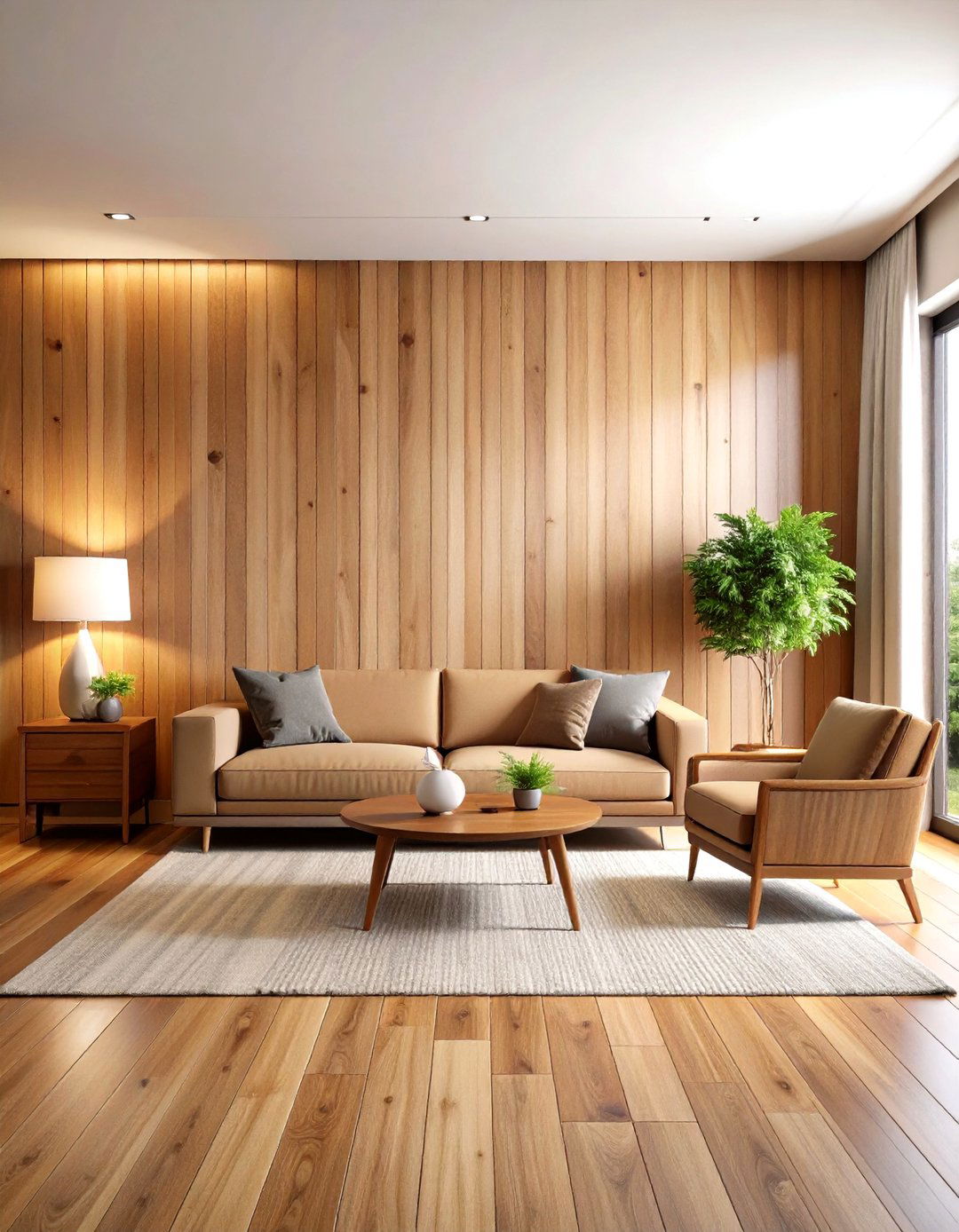
Shiplap paneling consists of long, horizontal wooden boards installed with a slight gap between each, creating subtle shadow lines that enhance linearity and light play on walls. Originally popularized in coastal farmhouses, painted white shiplap infuses rooms with brightness and a relaxed, seaside vibe, while natural‐finish options showcase wood grain for warmth. Beyond aesthetics, shiplap adds a layer of insulation and can conceal minor wall imperfections, making it both decorative and practical.
2. Board-and-Batten for Vertical Drama

Board-and-batten features alternating wide boards and narrow battens, creating bold vertical stripes that amplify ceiling height and architectural interest. Traditionally used on exteriors, its indoor application modernizes hallways and living spaces with rhythmic texture. Painted in contrasting or monochrome hues, board-and-batten can act as a wainscot replacement or full-height treatment, offering an adaptable canvas for color and lighting effects. Its simple installation makes it a favorite for DIYers seeking high-impact detail without complex fabrication.
3. Picture-Frame Molding Panels
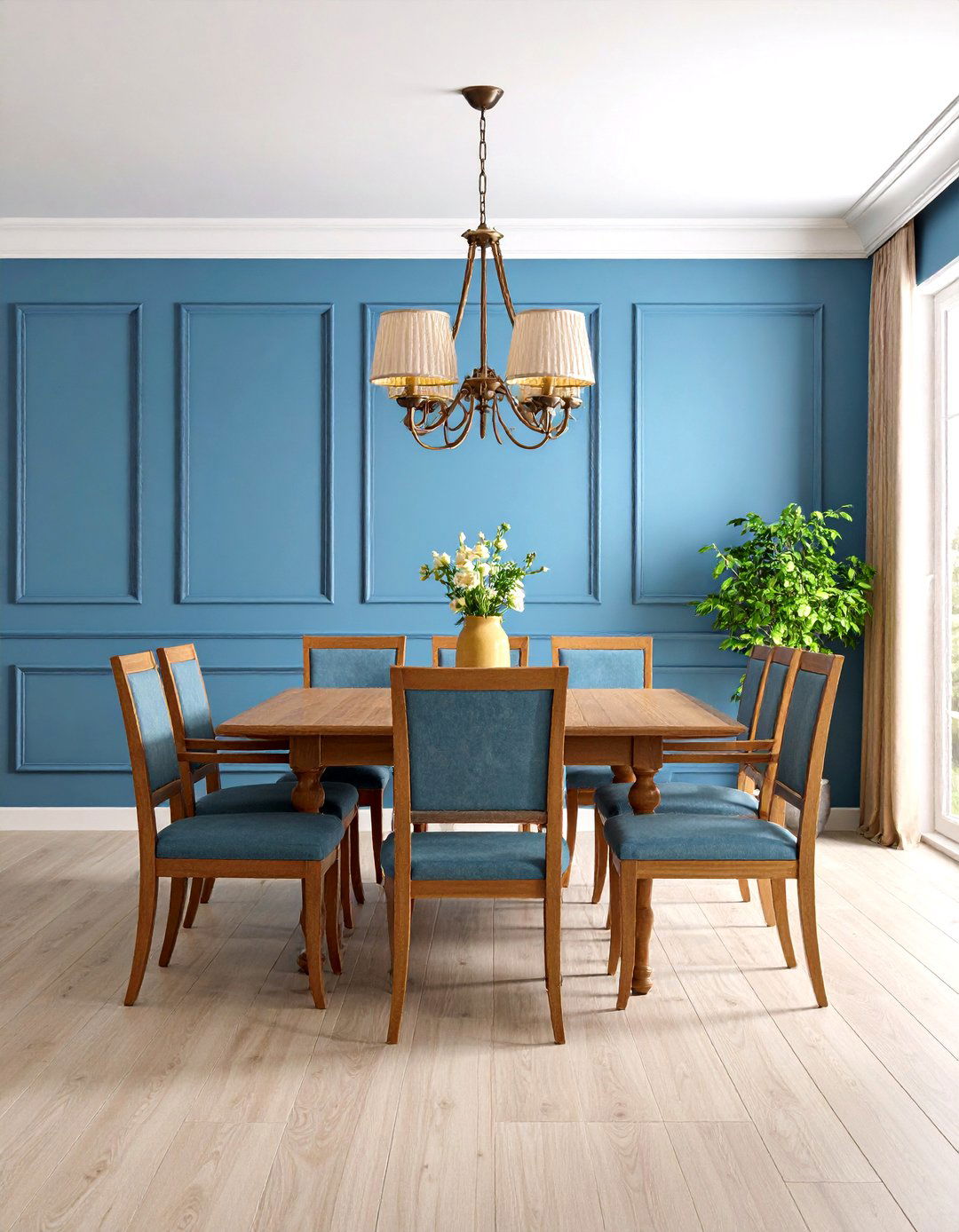
Picture-frame molding transforms flat walls into elegant, custom picture frames—often arranged in uniform grids or asymmetrical layouts—to evoke classic European interiors. MDF or solid-wood trim is applied in rectangles or squares, then painted the same color as the wall for subtle dimension or in a contrasting tone for eye-catching definition. This approach enriches formal rooms with architectural gravitas and can be scaled from small foyer accents to grand dining room statements.
4. Beadboard Wainscoting
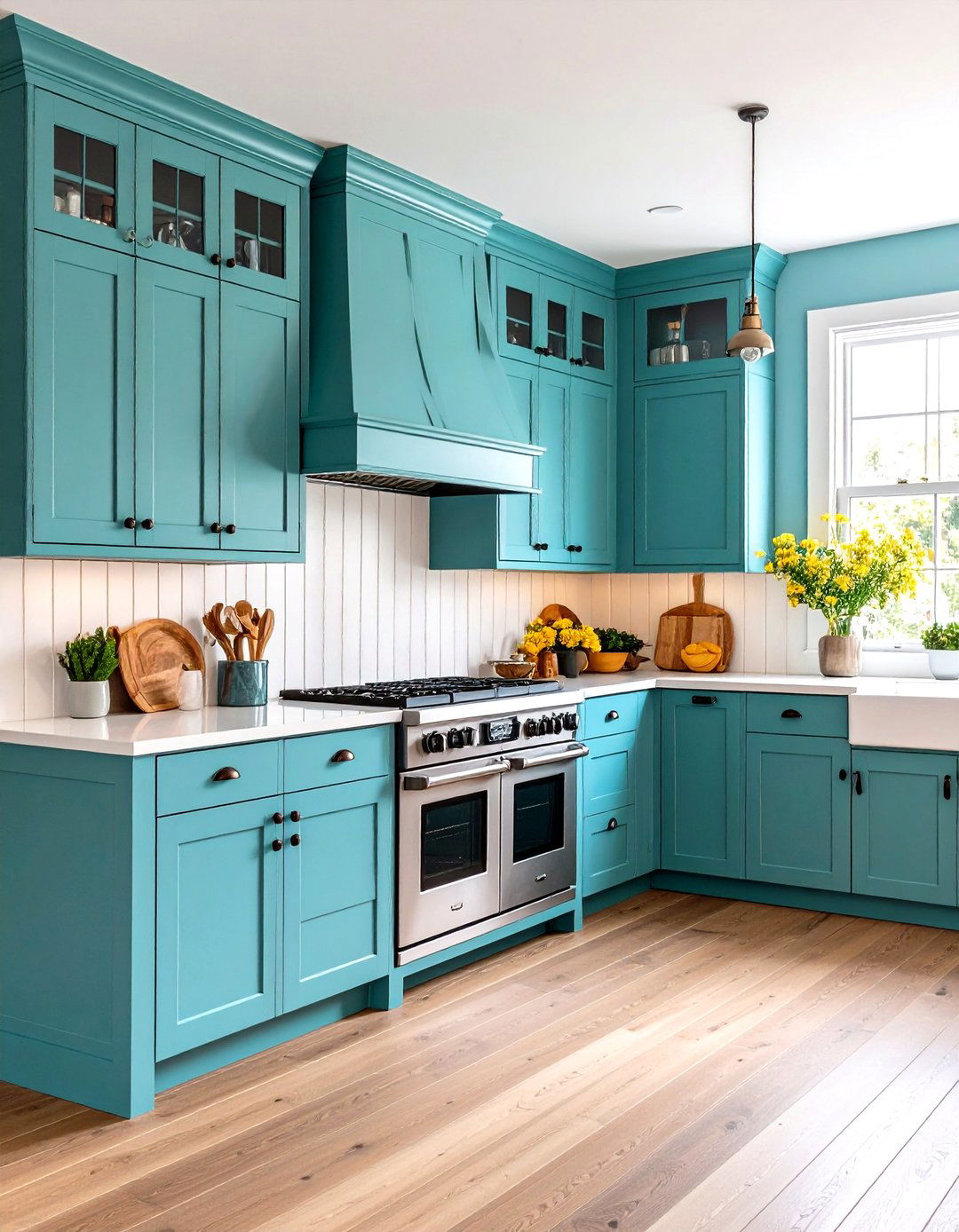
Beadboard paneling, characterized by its narrow, vertical grooves (beads), brings a cottage-chic sensibility to any room. Traditionally extending halfway up walls, beadboard wainscoting protects surfaces in high-traffic areas and adds a cozy, textural component. Available in vinyl, MDF, or painted wood, beadboard suits kitchens, bathrooms, and entryways, pairing seamlessly with peg rails or tile backsplashes for a crafted, budget-friendly upgrade.
5. 3D Geometric Panels
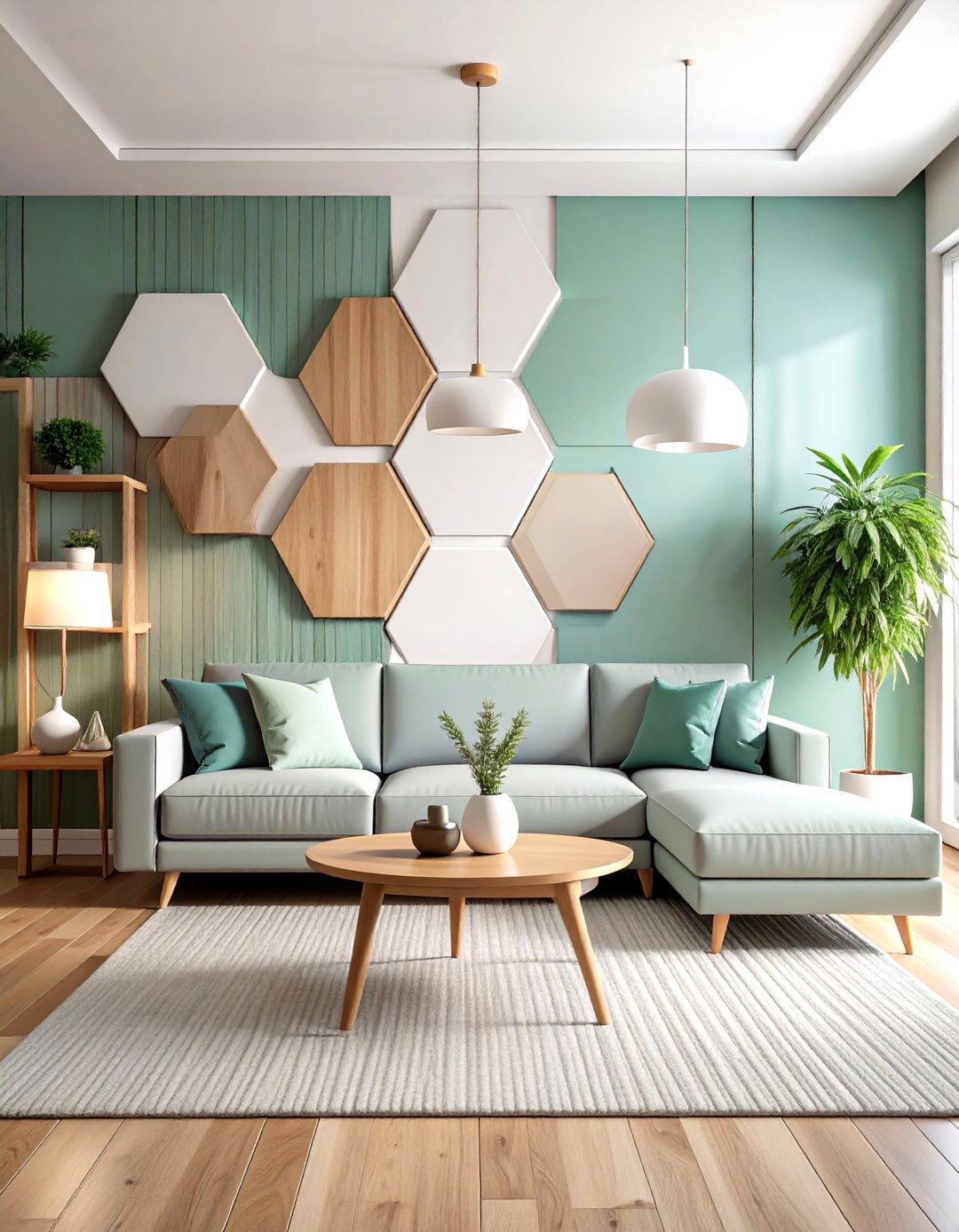
Three-dimensional geometric panels—made from gypsum, MDF, or engineered wood—create sculptural surfaces that interplay with shadow and light. Hexagonal, diamond, or wave patterns offer modern, tactile backdrops for living rooms, home offices, or commercial lobbies. Painted monochrome for minimalism or in gradient palettes for dynamic art-wall effects, these panels are typically lightweight and installable with construction adhesive, delivering an instant gallery-worthy vibe.
6. Vertical Slat Panels with Hidden Doors
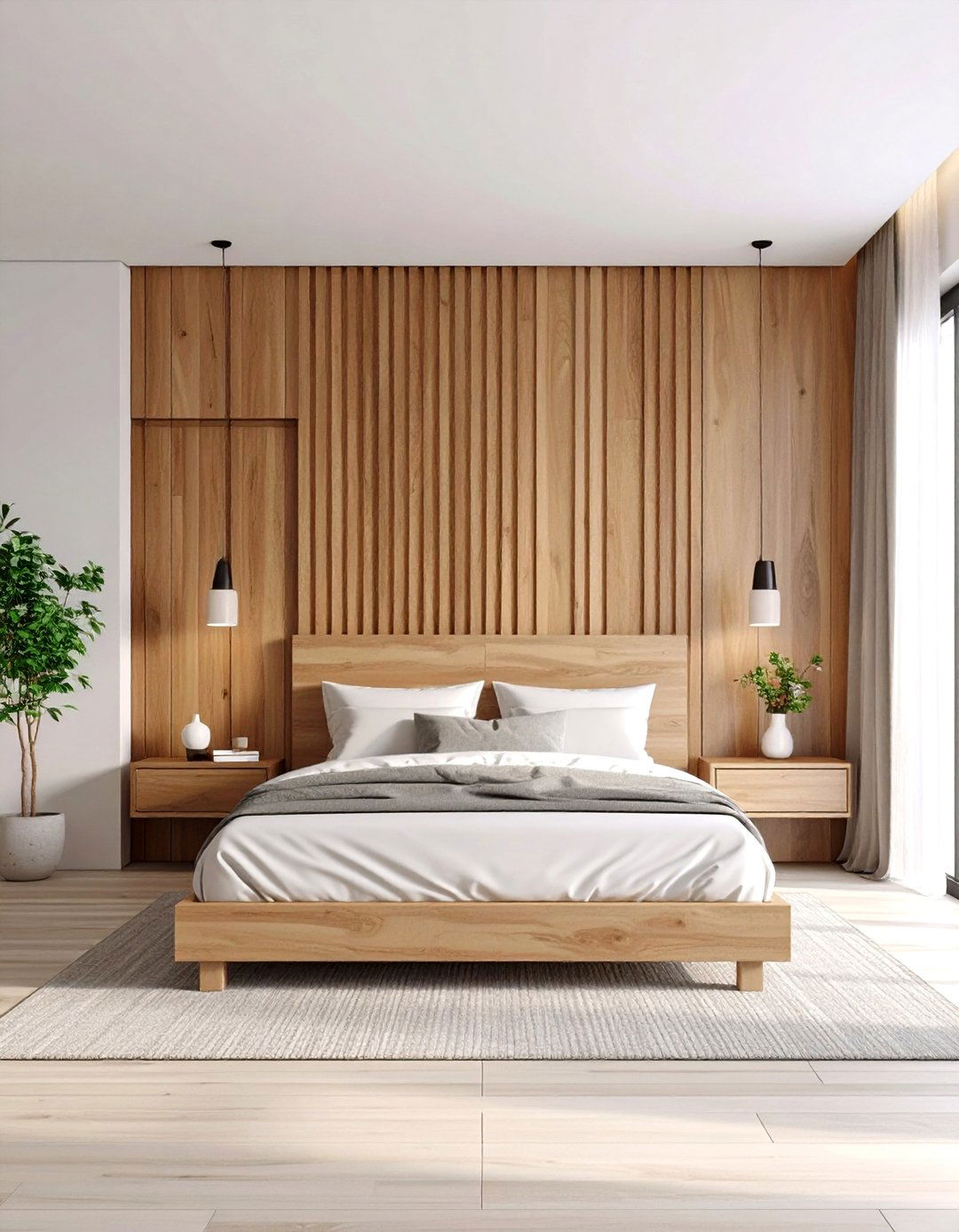
Vertical wood-slat paneling conceals doors and storage behind uniform slatted facades, merging functionality with seamless design. The continuous grain camouflages openings, creating uninterrupted vertical rhythm. Ideal for minimalist interiors, slatted walls can be stained or painted, and integrate hidden lighting or acoustic insulation. This approach elevates utilitarian elements into streamlined architectural features.
7. Fluted Clay Panels
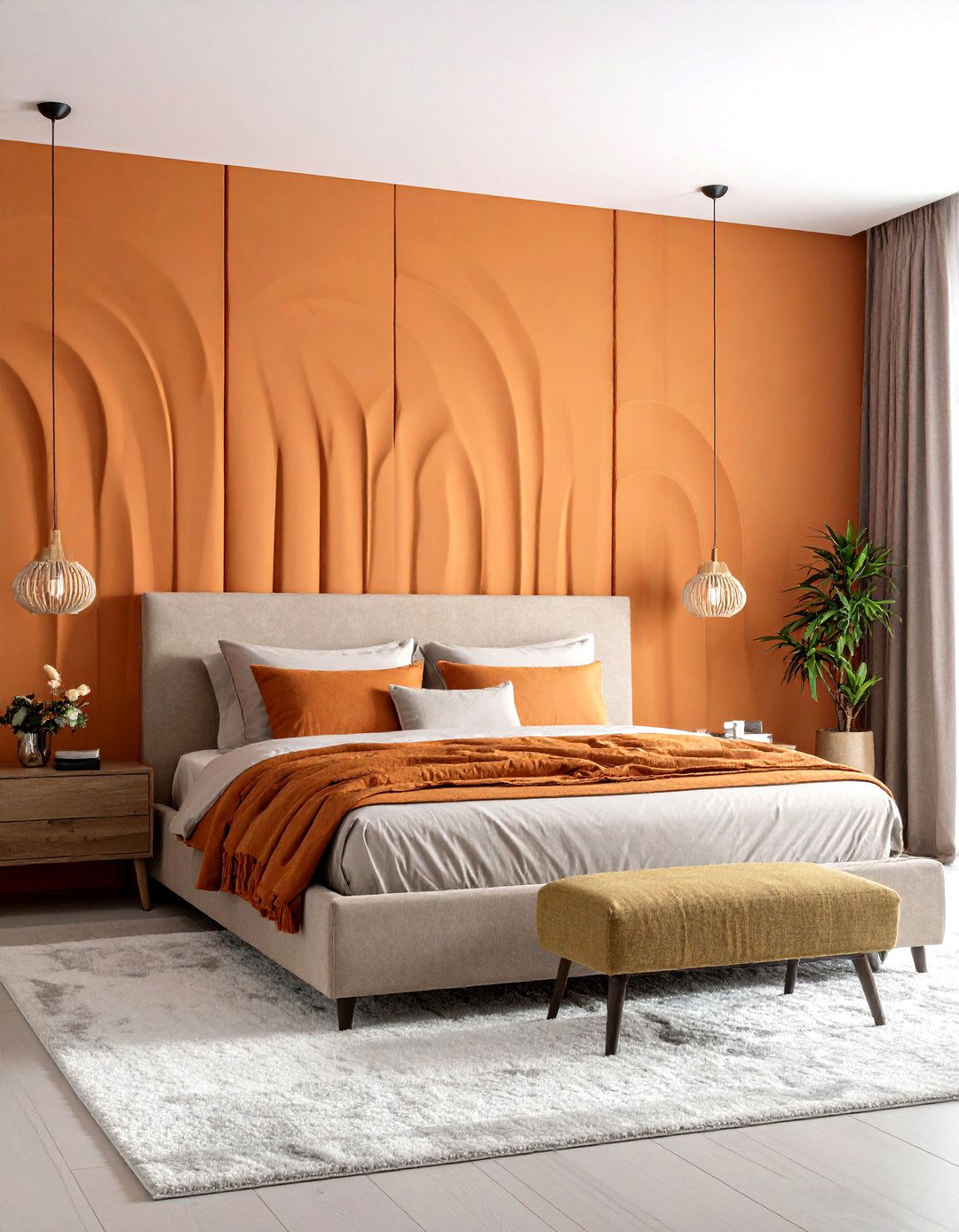
Fluted clay or plaster panels lend organic, textural depth through soft, curved grooves. In neutral palettes, fluted walls bring subtle sculptural interest to bedrooms and hallways; deeper hues highlight curves for dramatic effect. Beyond aesthetics, clay panels regulate humidity and acoustics, leveraging natural thermal properties. Their handcrafted nature ensures each installation has unique charm.
8. Checkered Board-and-Batten

A playful twist on board-and-batten, checkerboard layouts alternate panel and batten colors or orientations to craft dynamic accent walls. Often installed behind beds or dining tables, the pattern injects personality and focal interest. Combining dark and light wood or painted panels amplifies depth, while creative grid sizes allow customization to room scale.
9. Reclaimed Wood Paneling

Salvaged barn wood or factory-floor planks introduce rustic character and environmental responsibility. Weathered patinas in varied widths create richly textured walls, ideal for feature installations in living areas or home bars. Besides sustainability, reclaimed wood offers inherent color variation and durability, with finishes ranging from raw to lightly whitewashed for contemporary rustic interiors.
10. Bold Painted Panel Accents
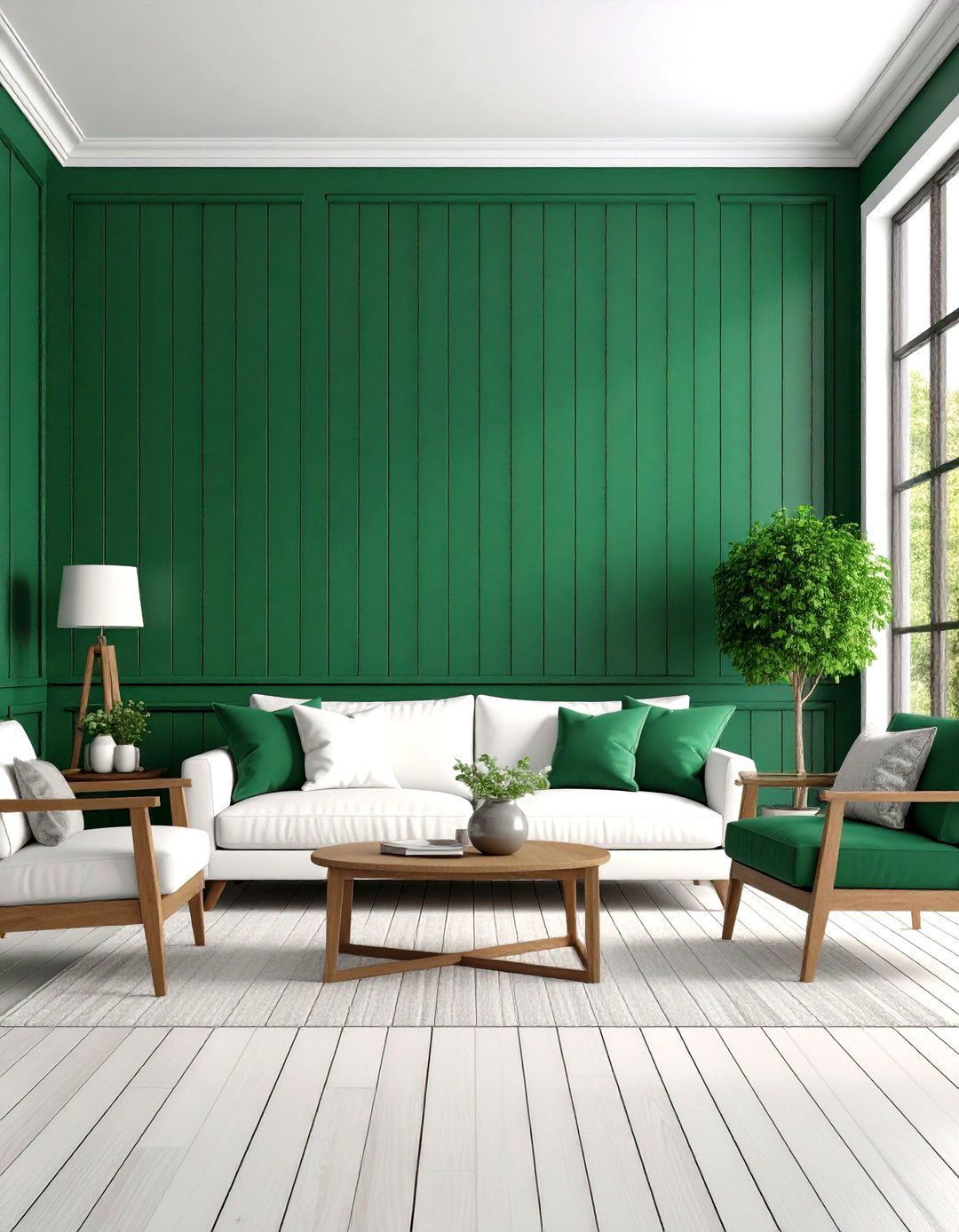
Painting panel layouts—whether shiplap, board-and-batten, or picture-frame molding—in bold hues transforms structured patterns into vibrant art walls. Deep blues, emerald greens, or terracotta reds add drama and can visually cocoon seating areas. Contrasting panel and wall colors further accentuate architectural details, ensuring the paneling doubles as an immersive color statement.
11. Horizontal Wood Slat Walls
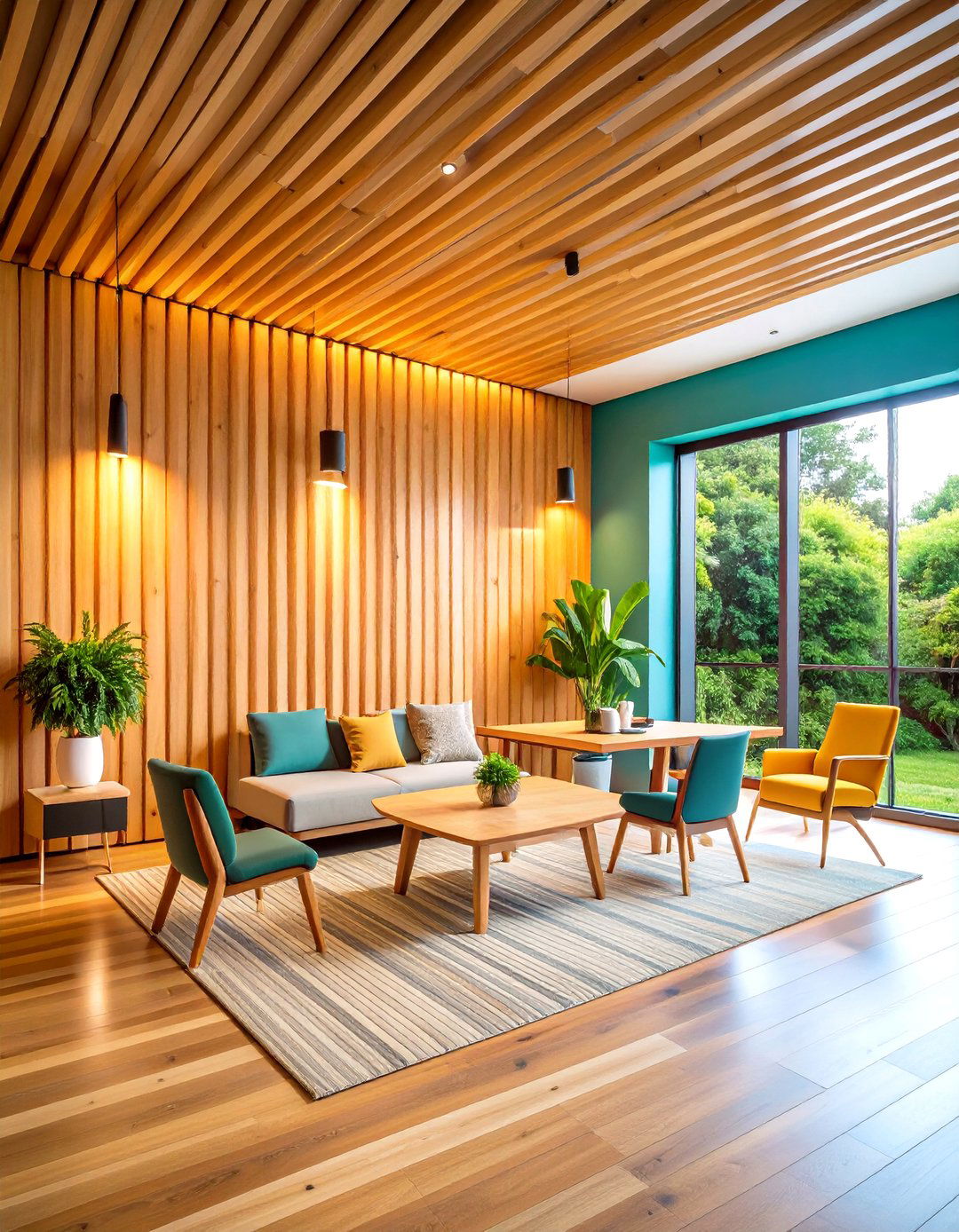
Horizontal wood slats installed flush with slight spacing create a modern, linear motif. Natural or stained wood enhances warmth in minimalist spaces; high-gloss painted slats deliver sleek sophistication. Beyond visual appeal, slatted walls work as acoustic baffles, reducing echo in open-plan homes and studios.
12. PVC and Moisture-Resistant Panels for Wet Areas
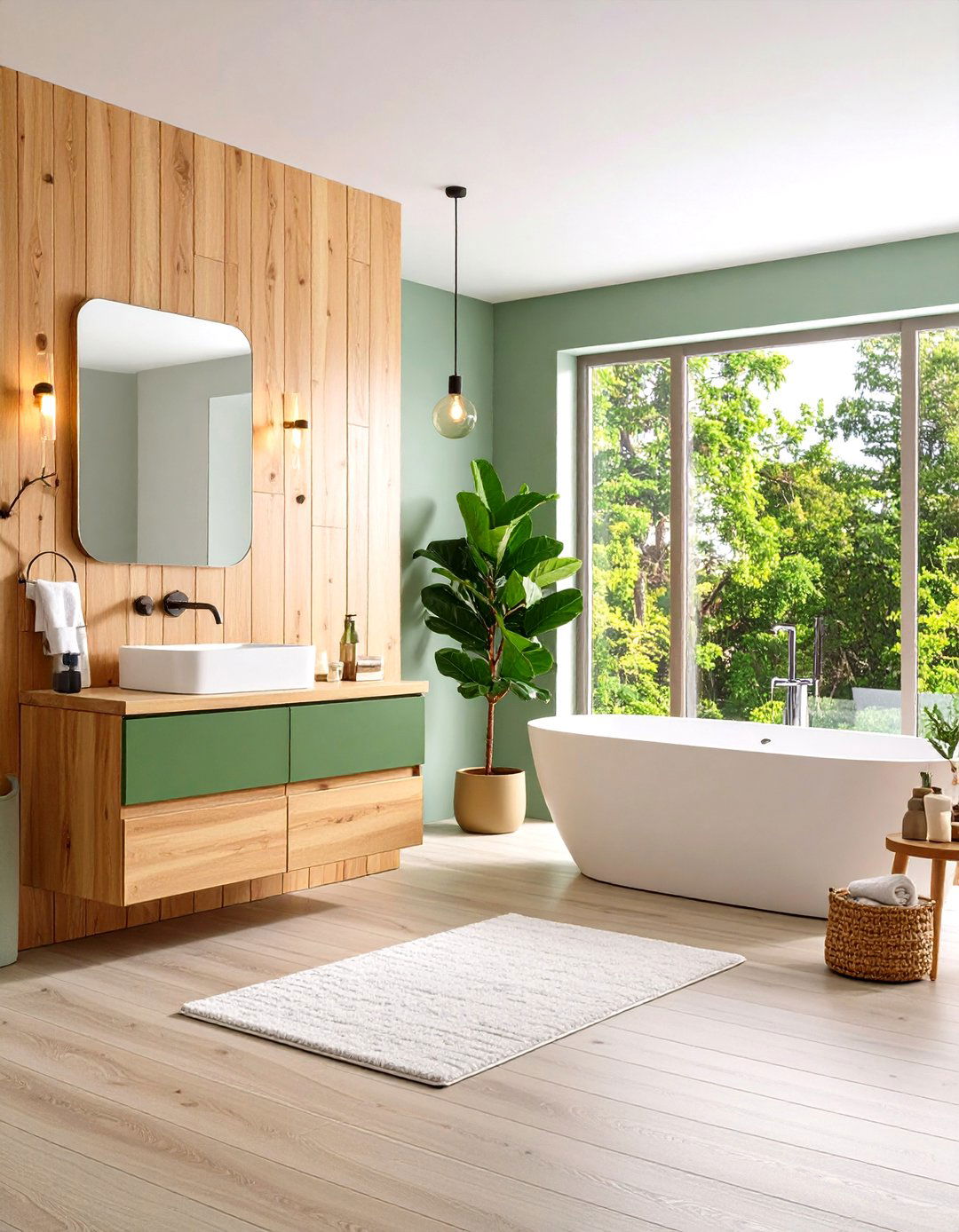
In bathrooms and kitchens, PVC or treated composite panels resist humidity and are easy to clean. Available in wood-look, stone-effect, or solid colors, these panels offer durable style without grout maintenance. Simple tongue-and-groove systems streamline installation, making them a practical upgrade for moisture-prone zones.
13. Upholstered Fabric Panels

Fabric-wrapped panels introduce softness, color, and acoustic insulation. Upholstered walls—tufted, geometric-stitched, or flat-wrapped—define home theaters, bedrooms, and offices with luxurious texture. Velvet, linen, or coated textiles provide stain-resistant options, while hidden mounting systems ensure a seamless look.
14. Metallic and Stainless Steel Panels
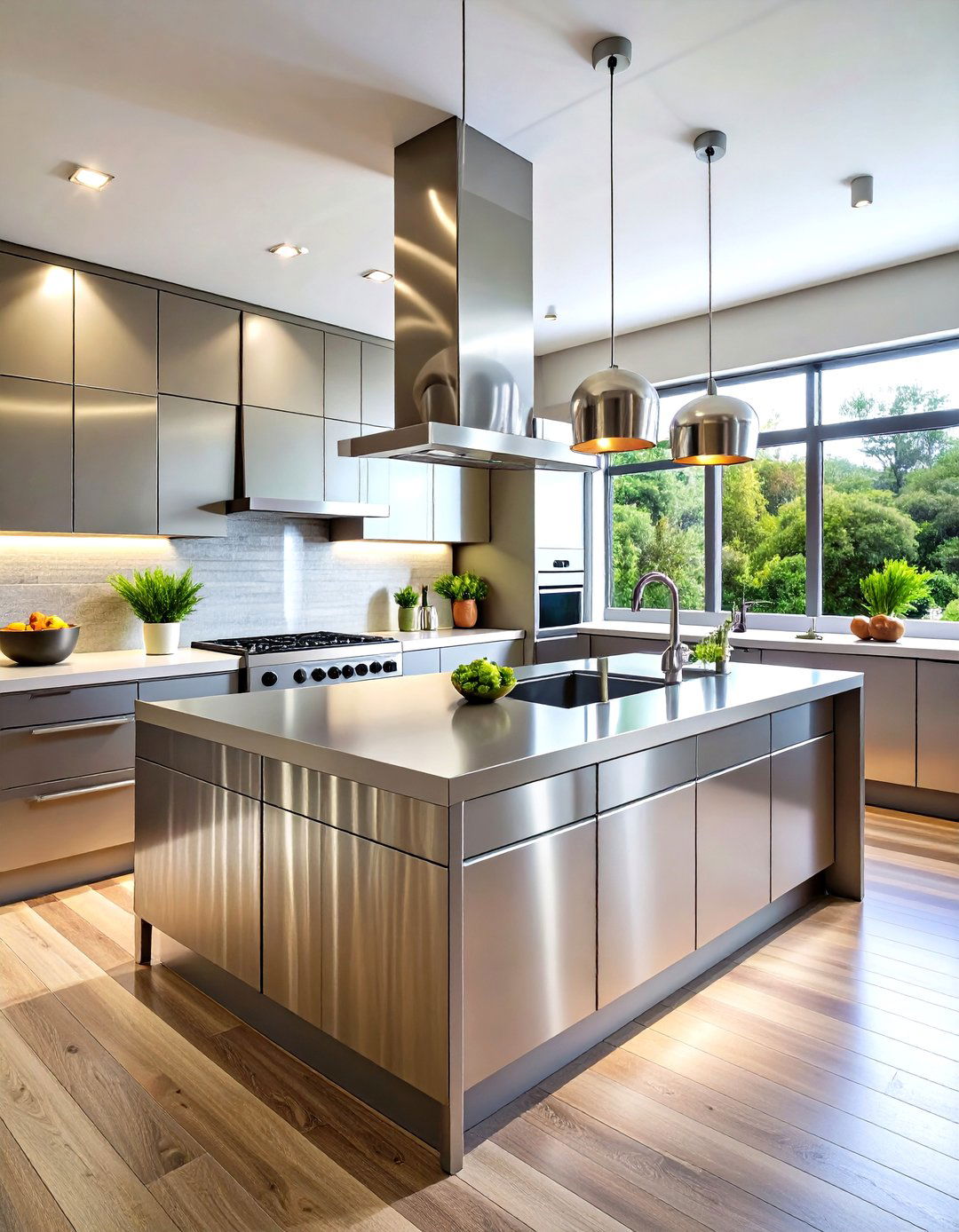
Stainless steel and metallic panels create ultra-modern focal points, reflecting light and amplifying industrial chic. From corrugated steel wainscoting to brushed stainless installations behind kitchen islands or bars, metal panels are durable, hygienic, and recyclable. Designers praise stainless steel for its “pragmatic beauty” and sculptural possibilities in residential interiors.
15. Cork Wall Panels
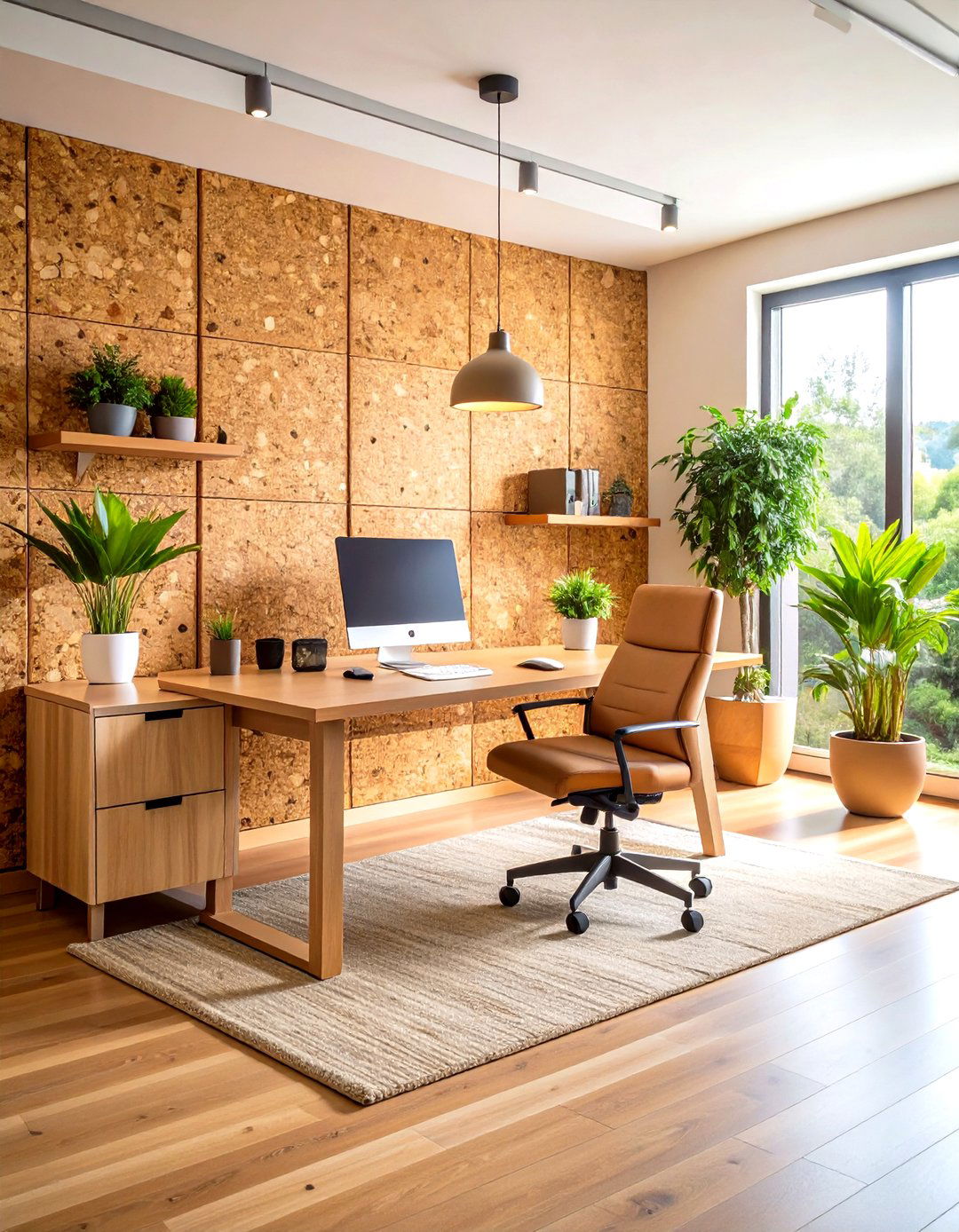
Cork tiles and panels offer eco-friendly warmth, sound absorption, and natural thermal regulation. Sourced from rapidly regenerating bark, cork’s speckled texture and tonal variation deliver bespoke accent walls. Its self-healing quality makes it ideal for pinning notes or artwork, perfect for home offices and kid’s rooms.
16. Faux Concrete Panels
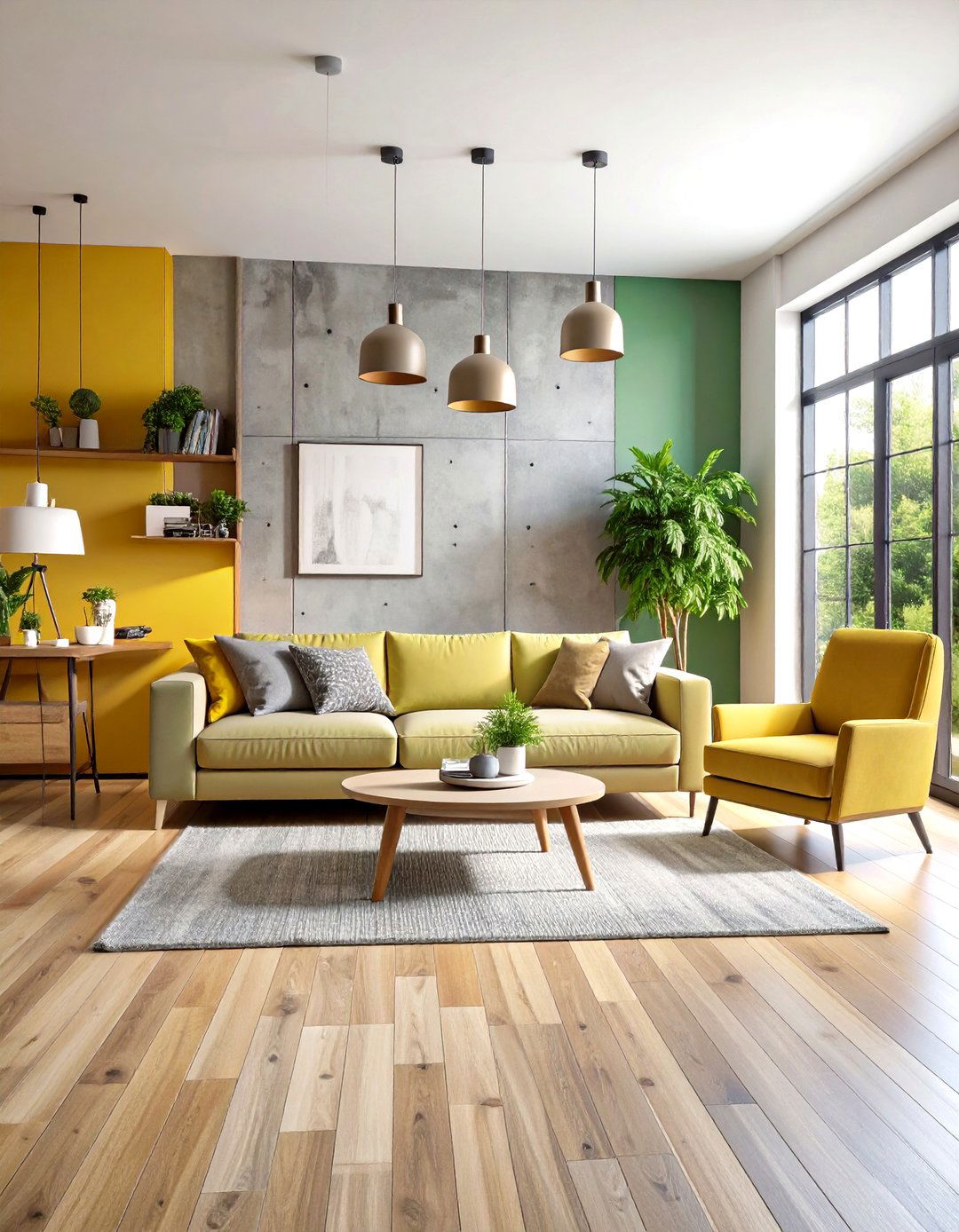
Lightweight polyurethane or gypsum-based faux concrete panels mimic raw concrete’s cool, industrial aesthetic without heavy installation. Fire-rated and DIY-friendly, these panels deliver textured, seamless facades in living rooms or loft-style kitchens, combining urban edge with cost-effective practicality.
17. Bamboo Wall Cladding
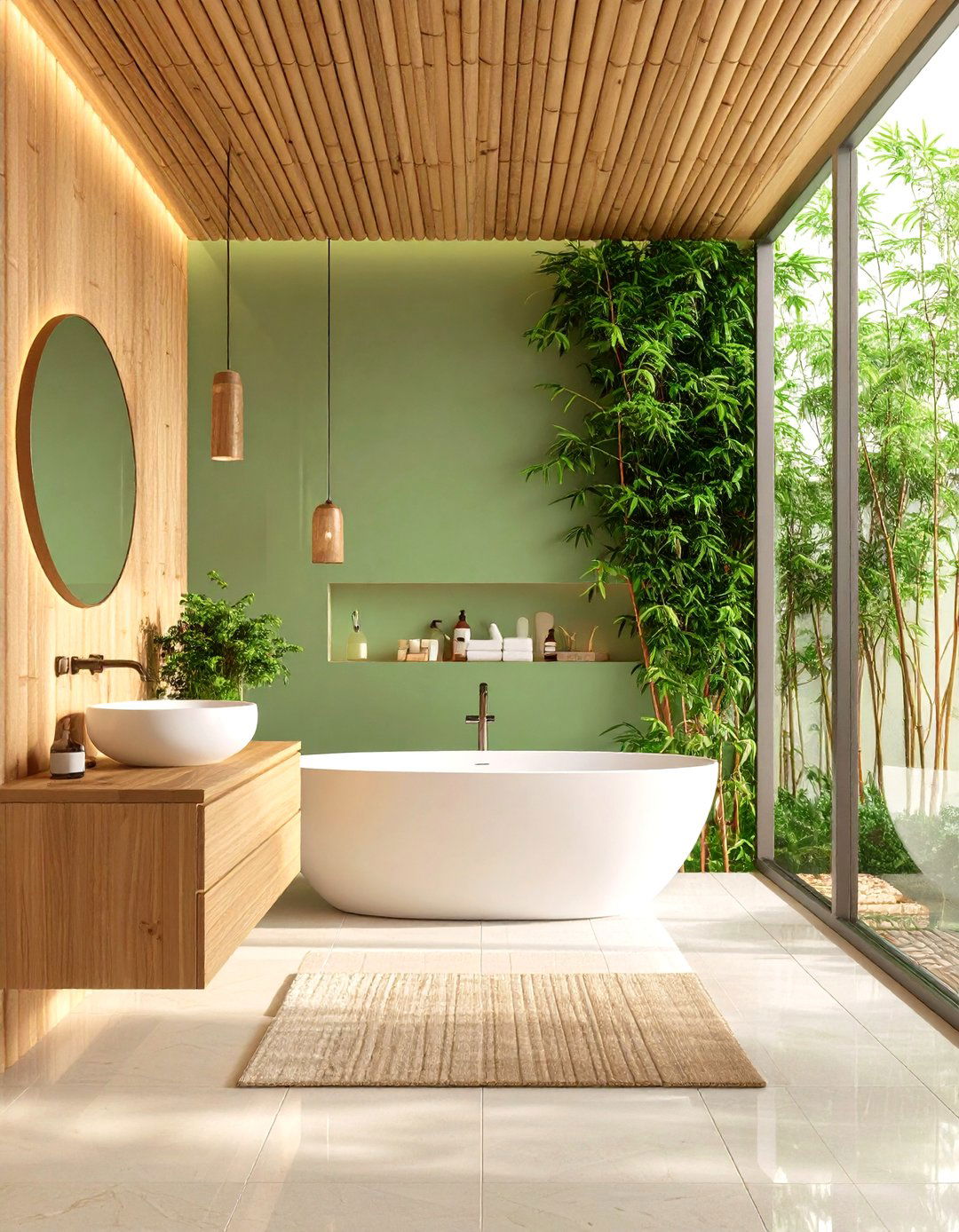
Bamboo panels provide sustainable, organic texture and warmth. Natural or carbonized bamboo offers linear grain patterns that complement minimalist and Asian-inspired interiors. Bamboo’s durability and moisture resistance make it suitable for feature walls in spas, bathrooms, and living areas, while also signaling eco-conscious design.
18. Acoustic Felt and PET Panels
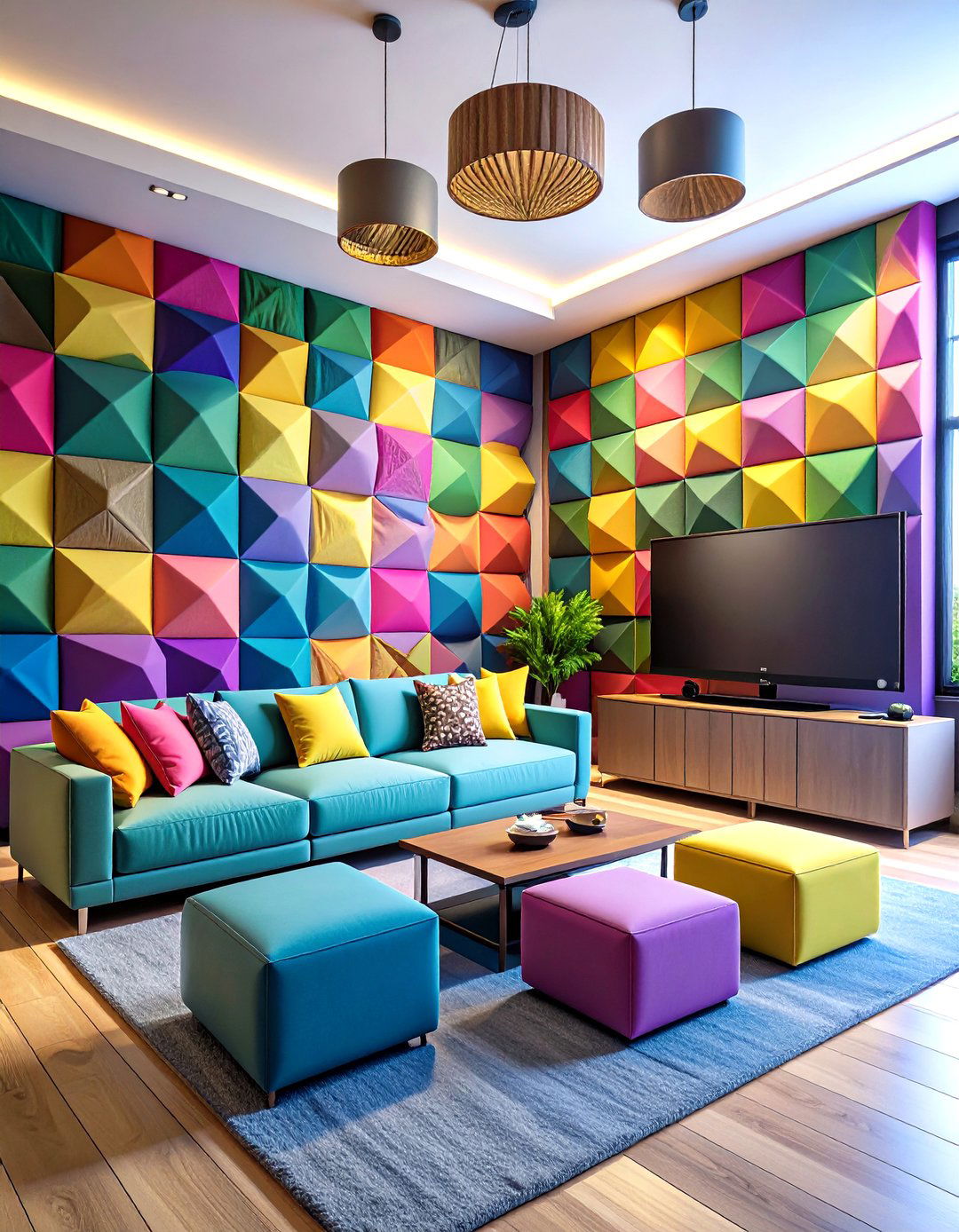
Felt-covered or PET acoustic panels merge sound control with color and pattern. Mounted in grid or random arrays, these soft panels reduce noise in open offices or media rooms. Available in hues and geometric shapes, they offer both functional and decorative appeal, seamlessly integrating into modern décor.
19. Glass and Mirrored Inserts
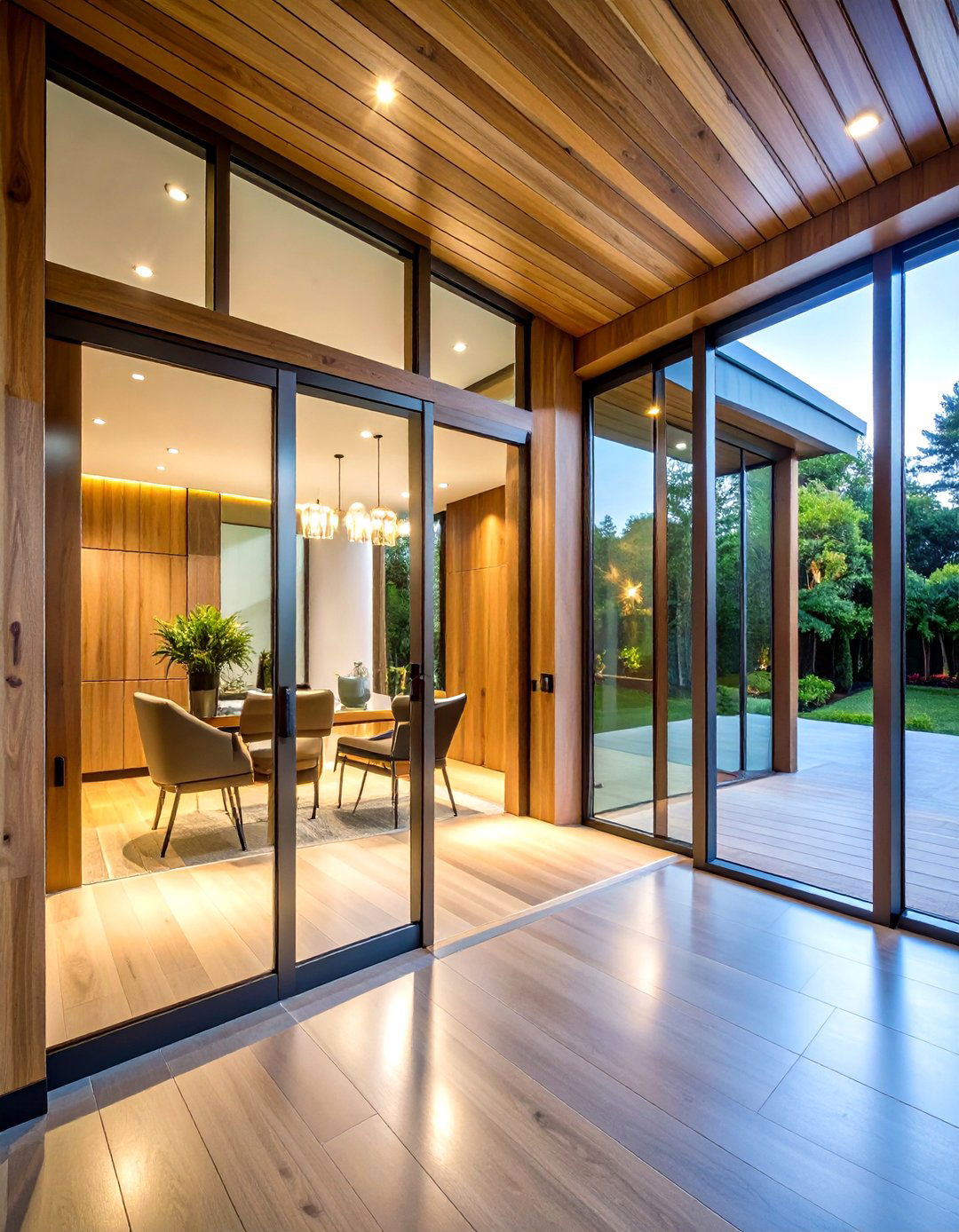
Glass panels—clear, frosted, or back-painted—create luminous wall treatments that bounce light and visually expand spaces. Mirrored inserts within framing or slat systems add depth and elegance, ideal for entryways and dining rooms. Glass panels can conceal wiring or serve as erasable whiteboards in home offices.
20. Mixed-Material Patchwork Paneling
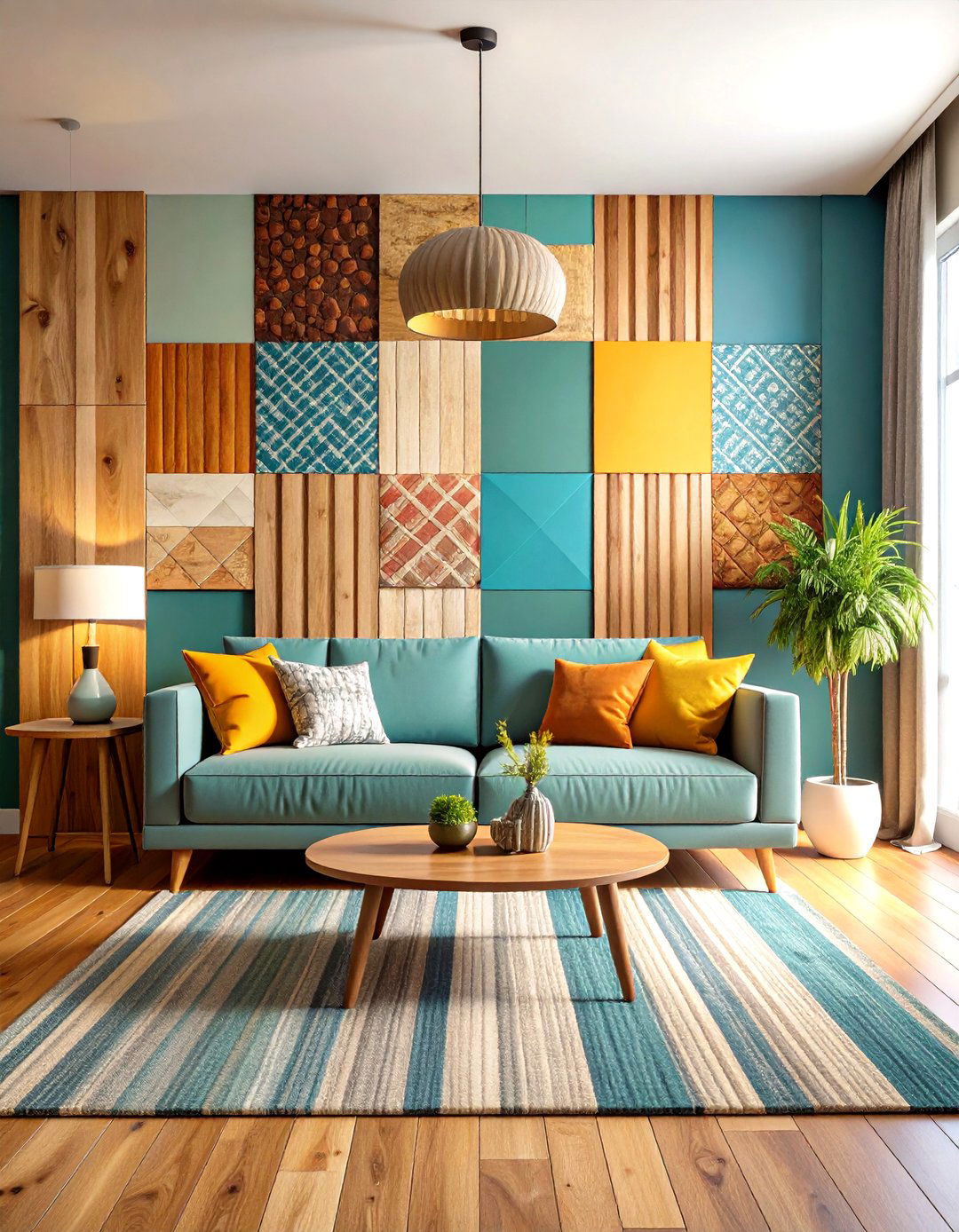
Combining multiple panel types—wood, metal, plaster, and wallpaper—into a quilt-like patchwork yields uniquely personalized walls. Alternating textures and finishes in irregular grids or organic clusters turns any room into an art installation. This eclectic approach celebrates materiality and craftsmanship, ensuring every wall is a conversation piece.
Conclusion:
From rustic reclaimed wood and classic beadboard to sleek metallics and high-tech acoustic systems, wall paneling transcends mere surface treatment to become a cornerstone of contemporary interior design. By selecting materials that match your aesthetic, budget, and functional needs—whether moisture resistance, sound absorption, or eco-credentials—you can craft spaces that are not only beautiful but also tailored to your lifestyle. Embrace these 20 ideas as starting points for creating walls that resonate with texture, color, and dimension, and transform every room into a richly layered, architecturally engaging environment.


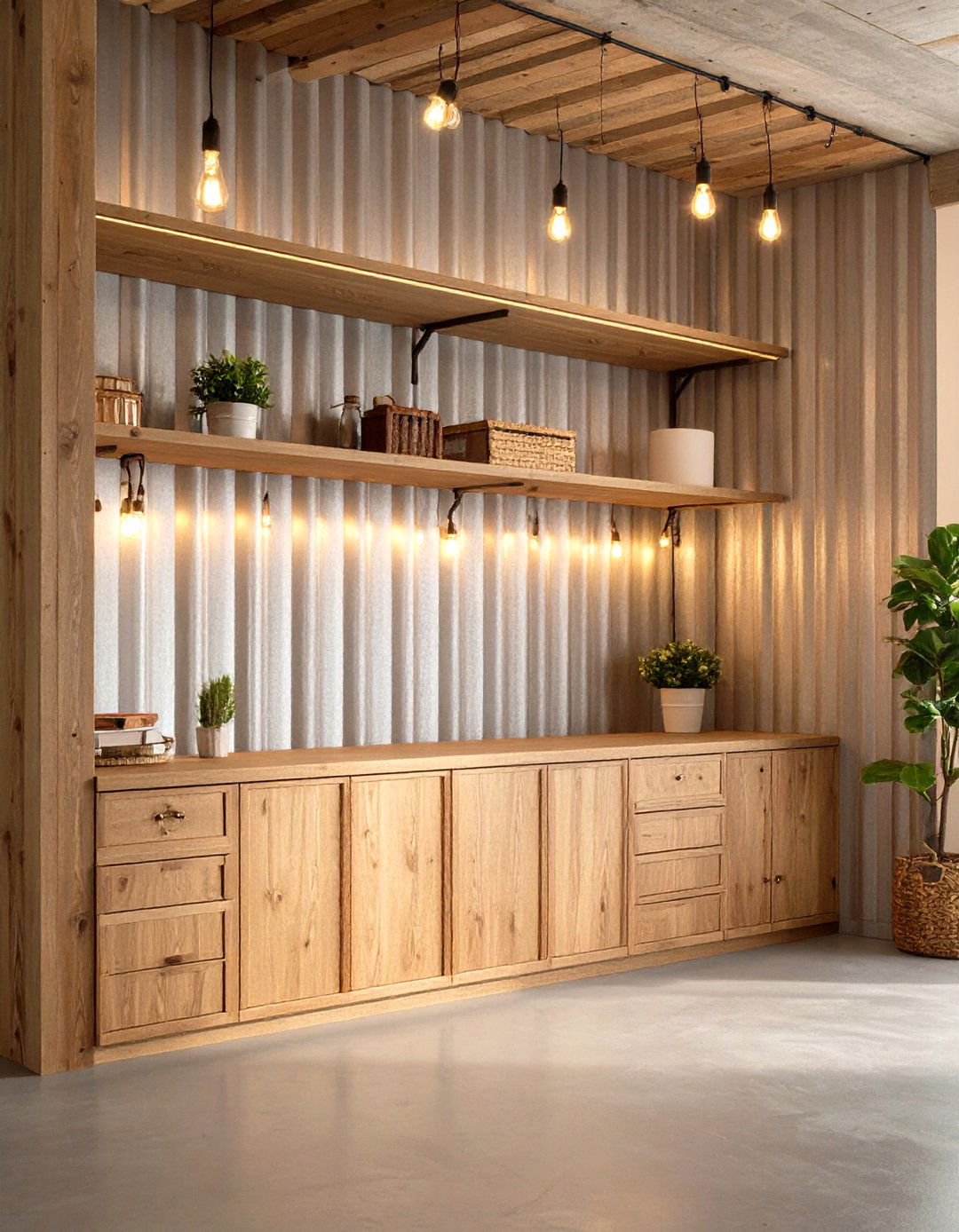
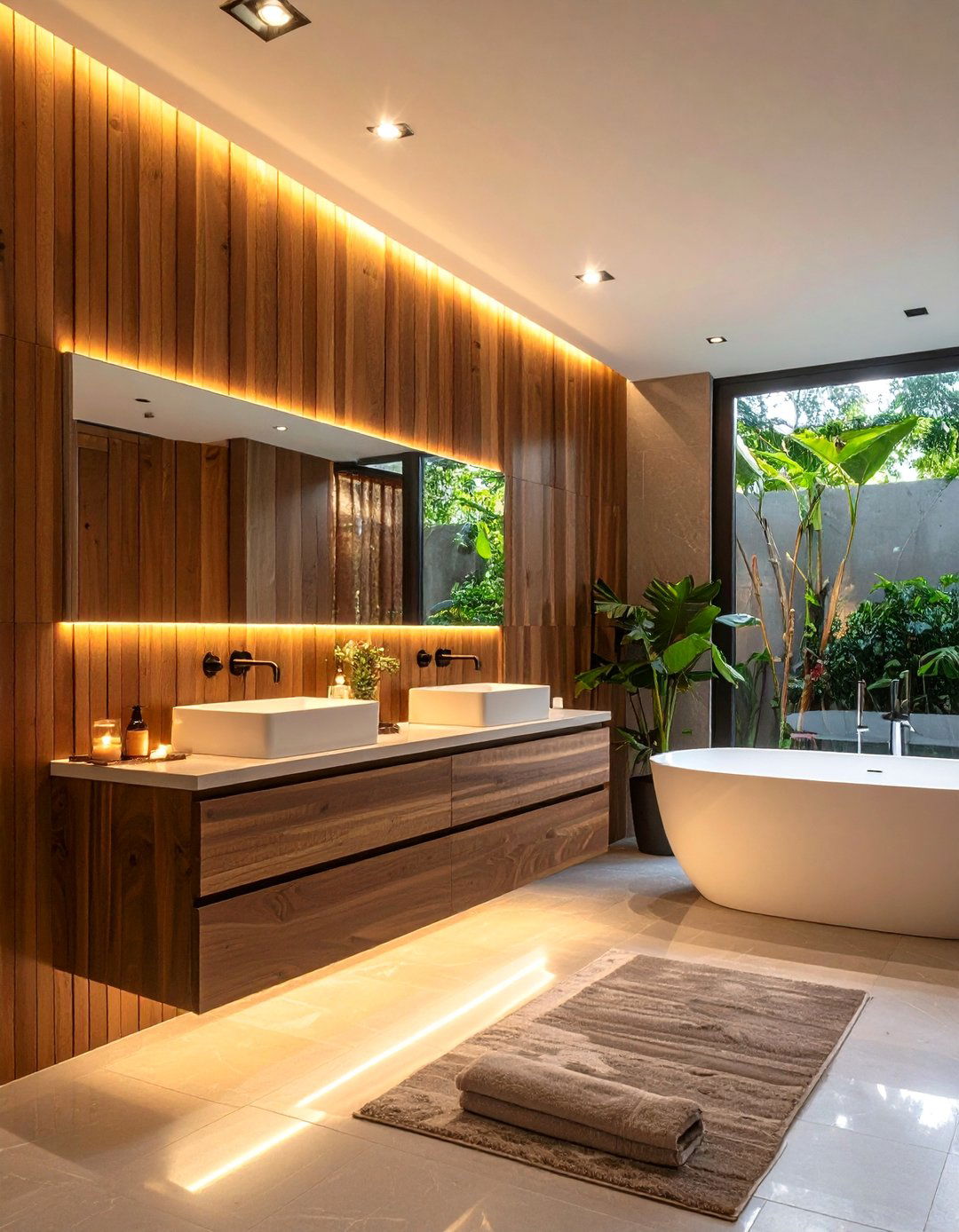


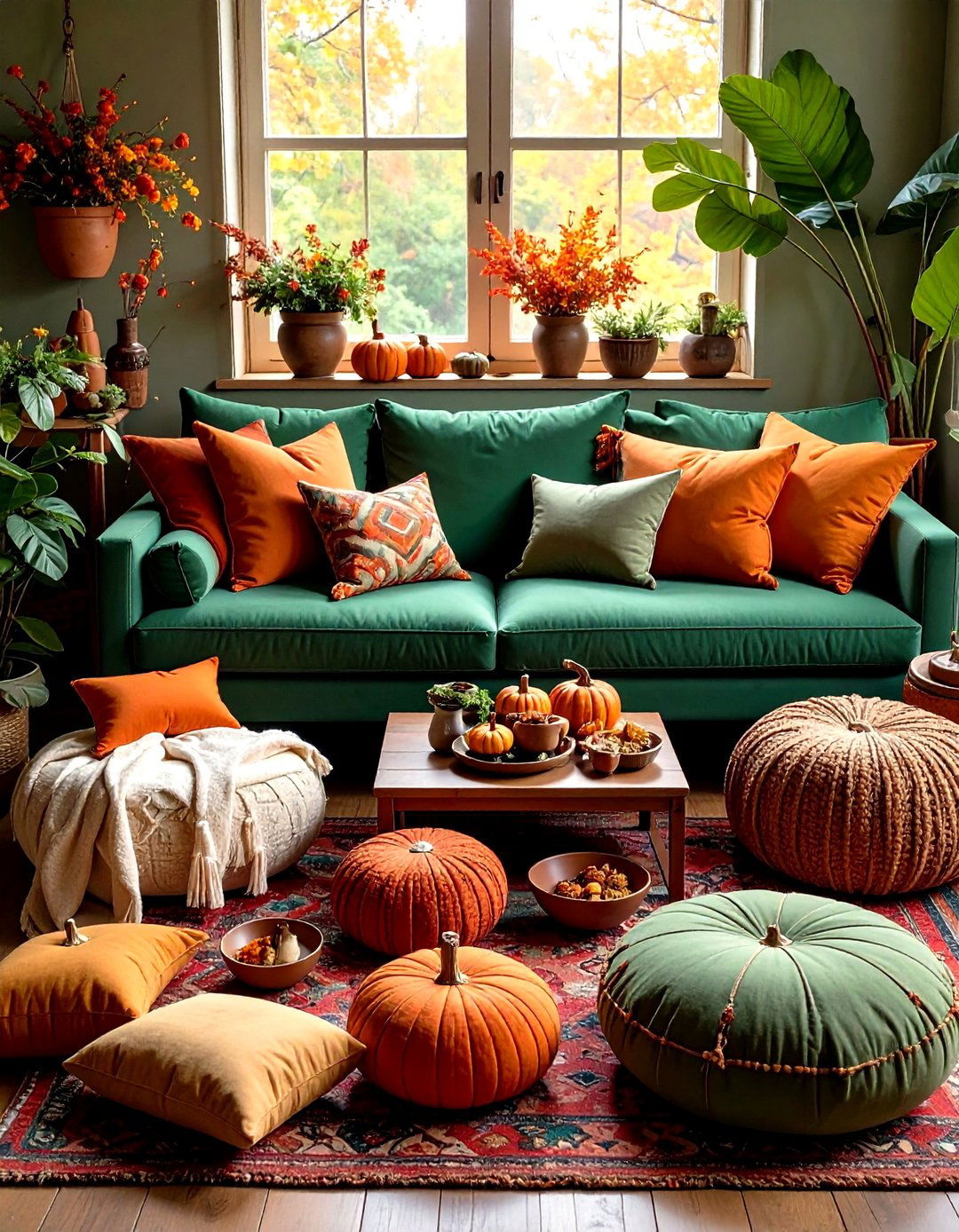


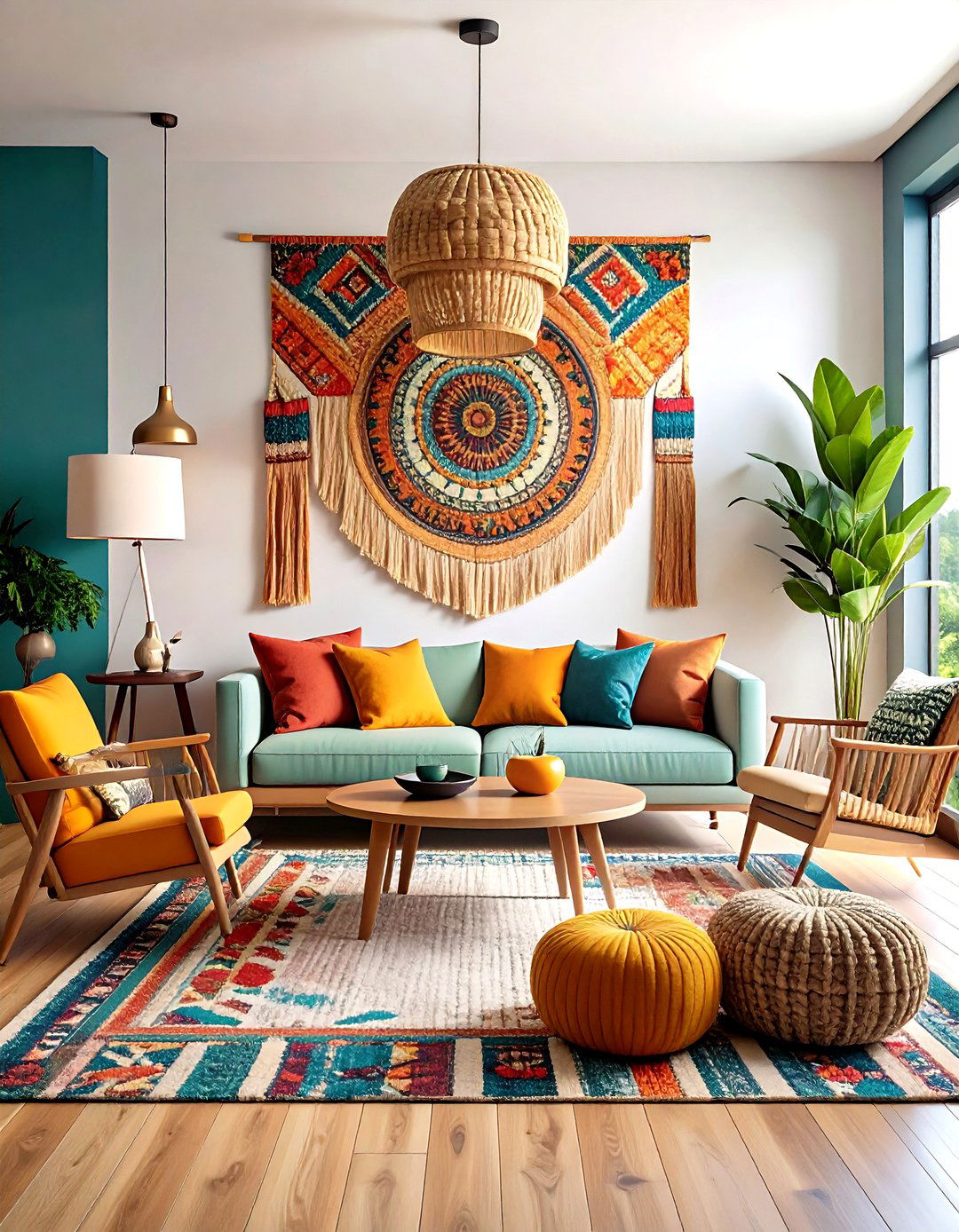
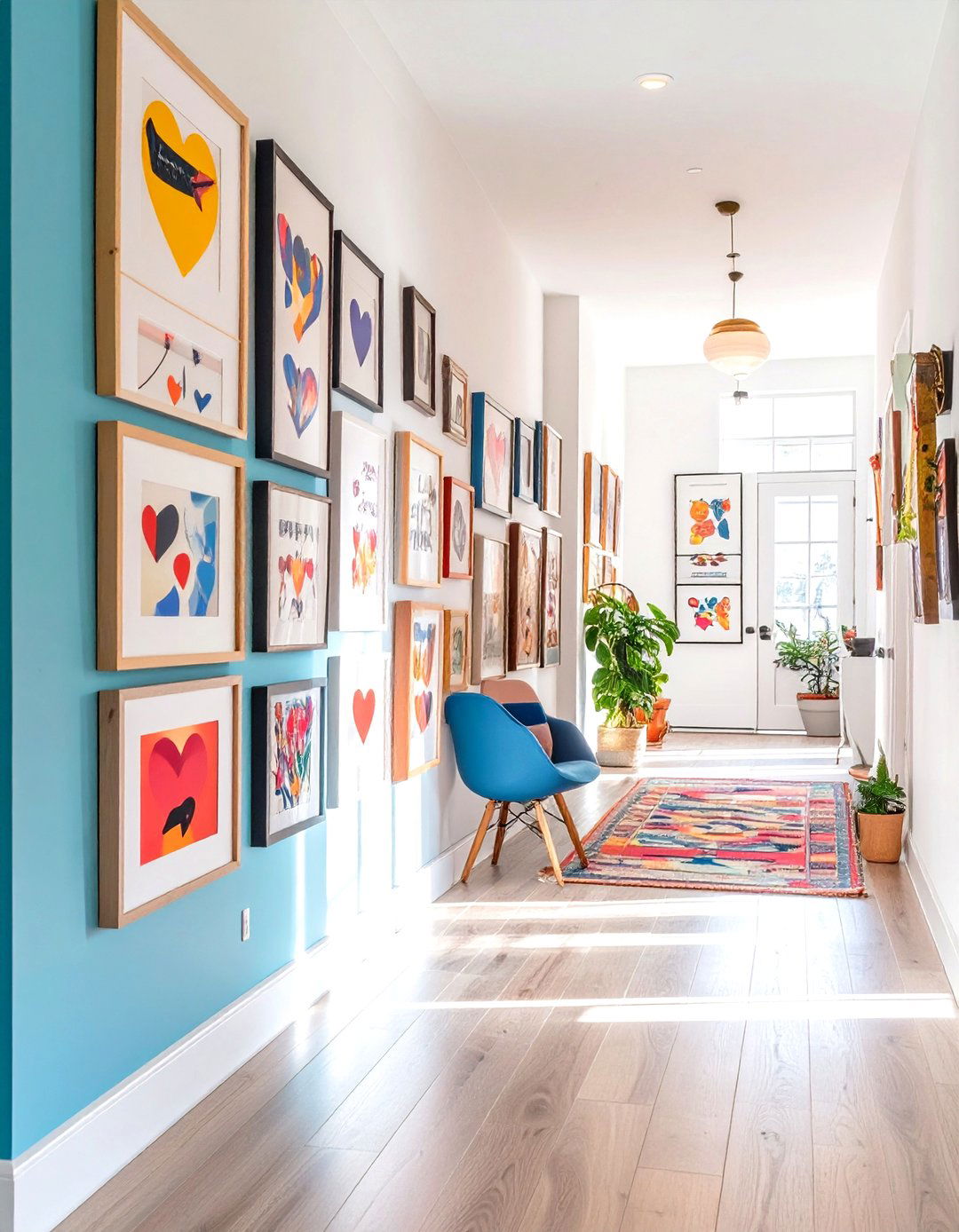
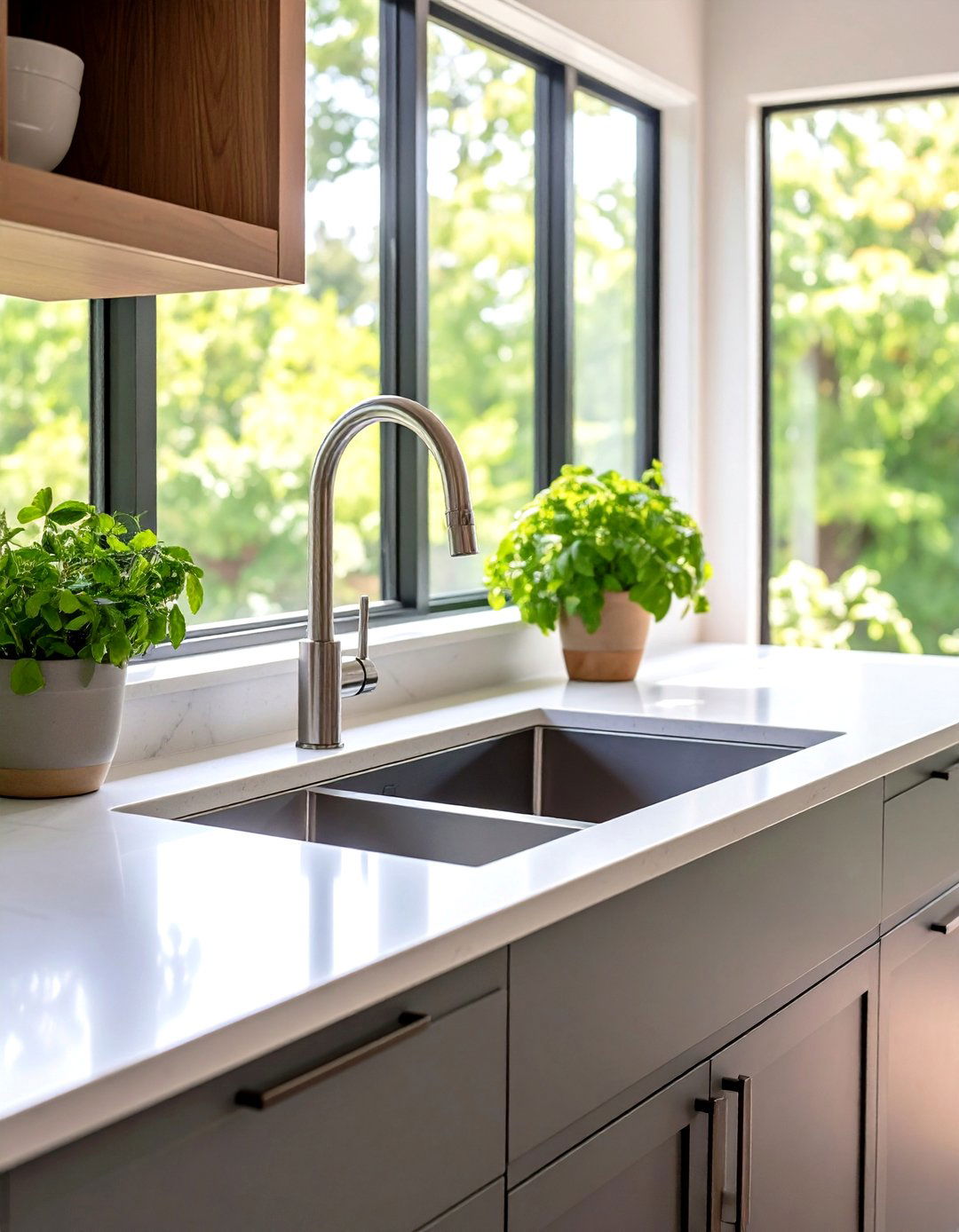
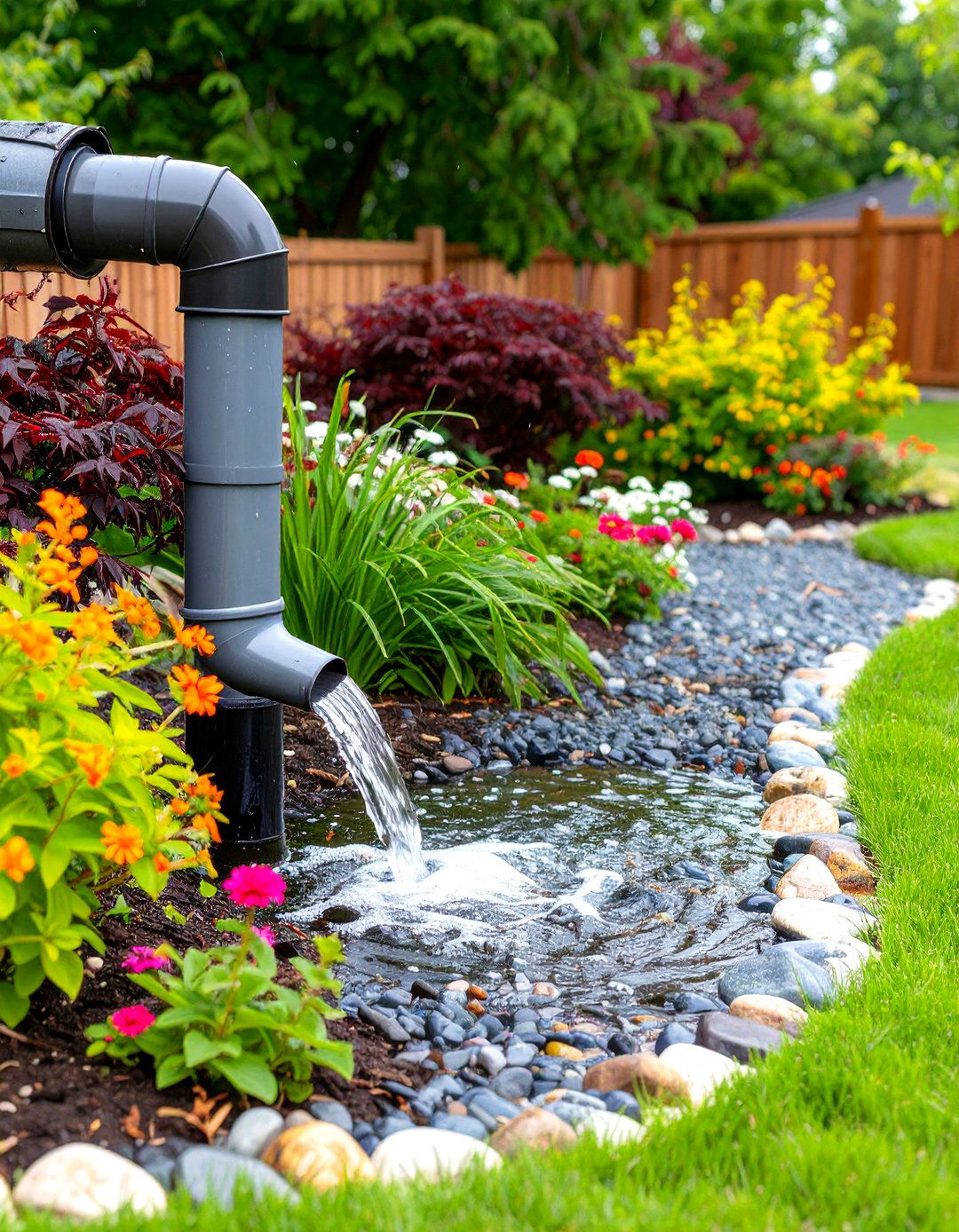
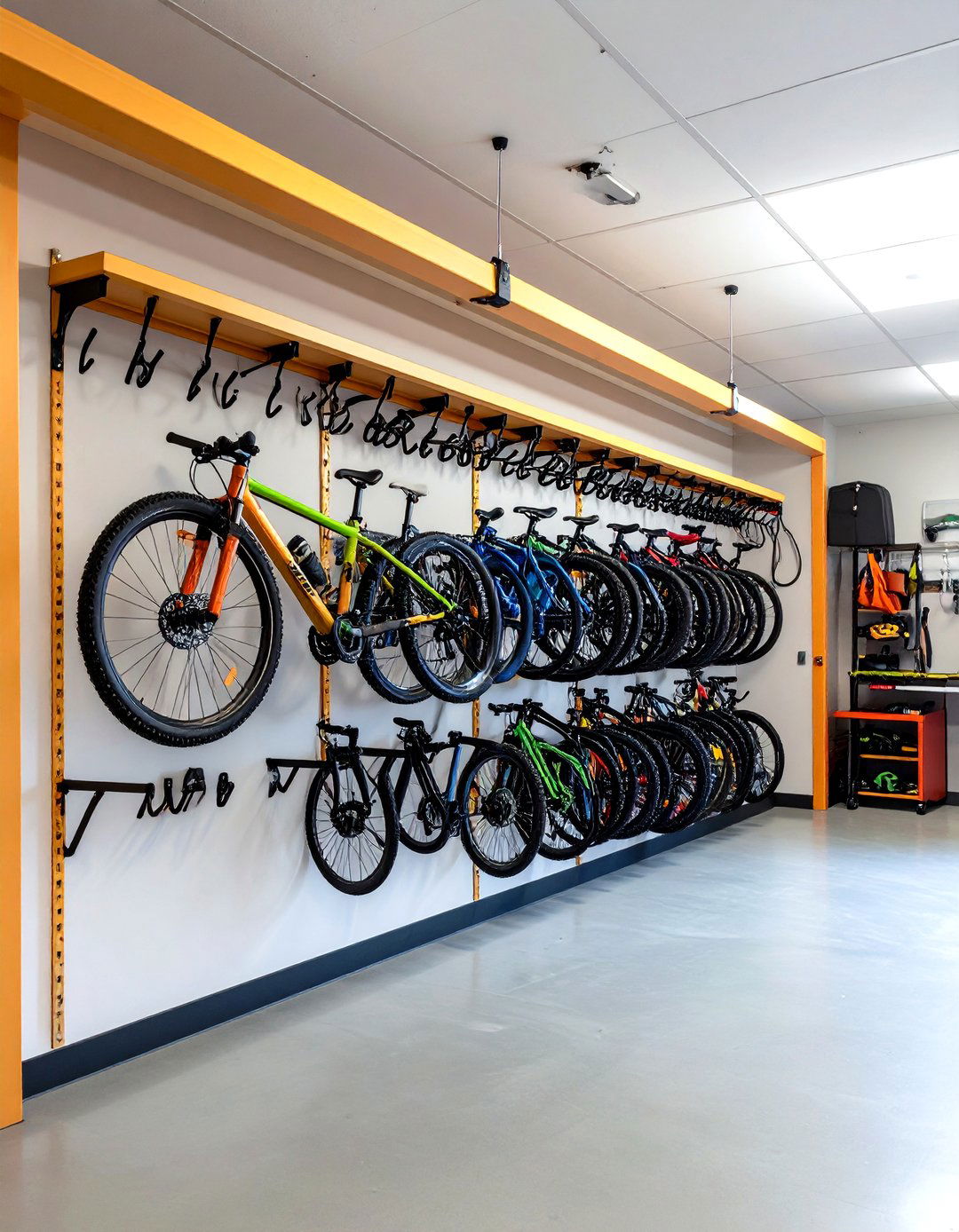
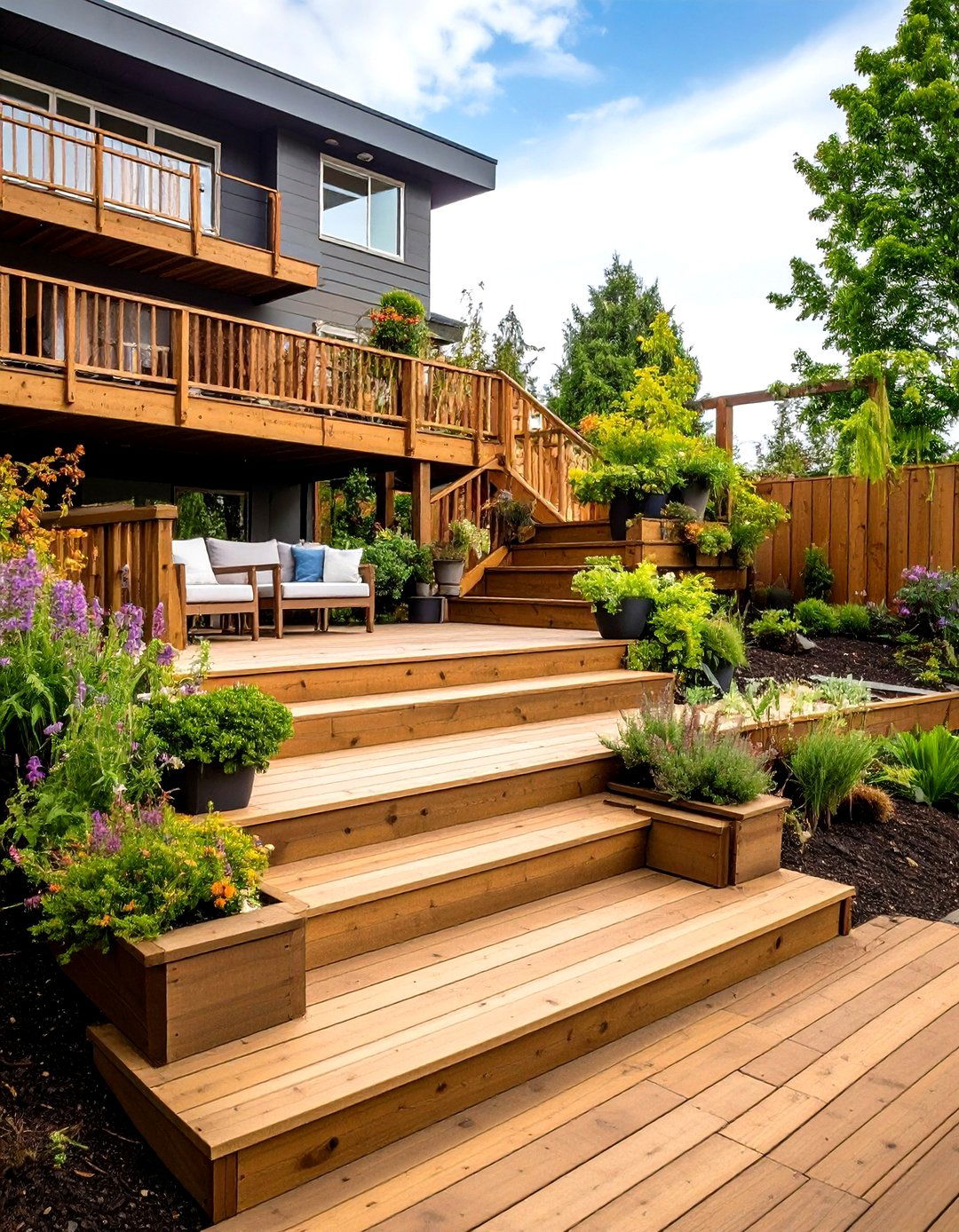
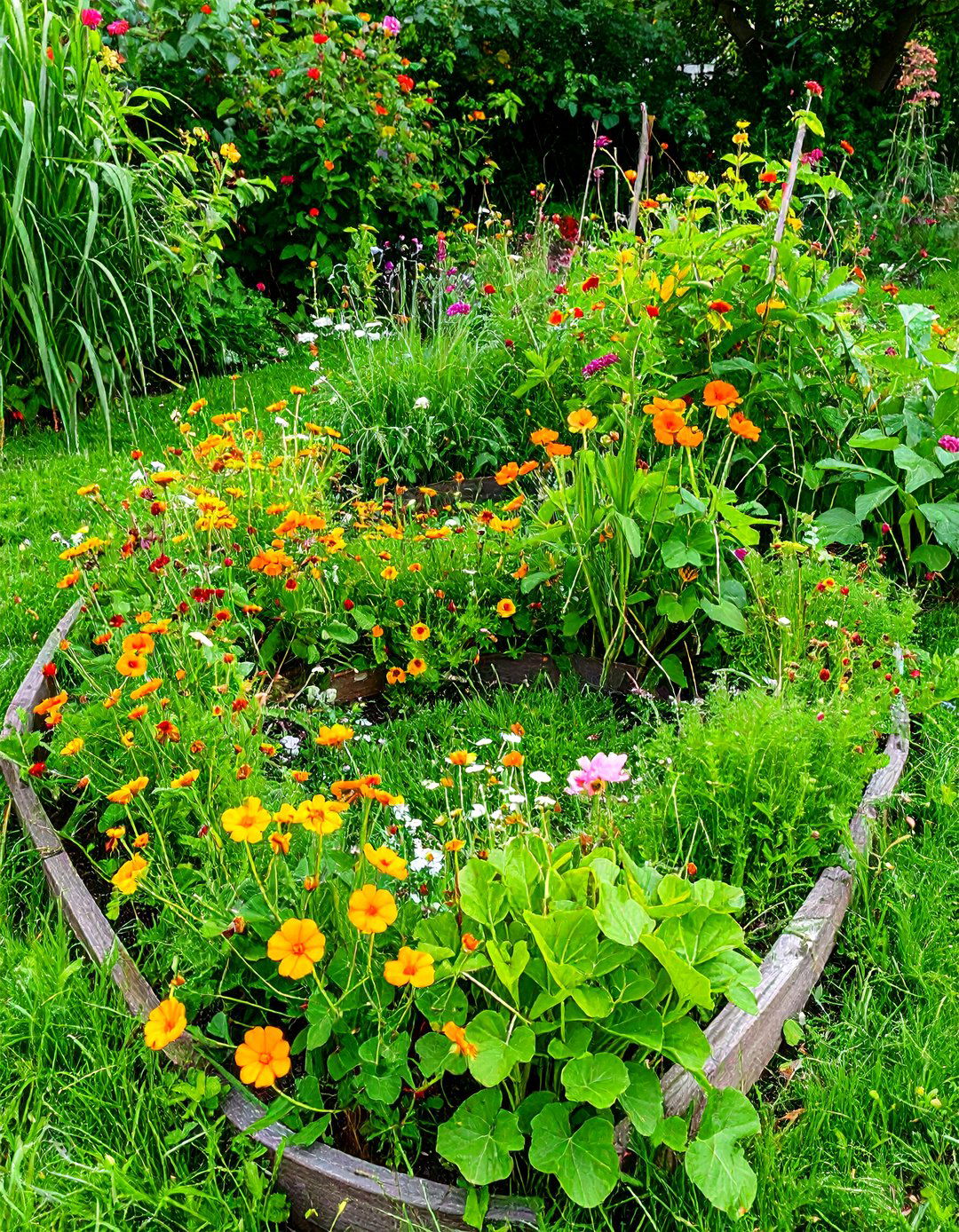

Leave a Reply